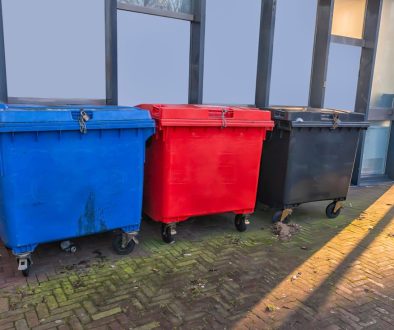Effective site clearance is a critical aspect of any building and construction project, laying the foundation for a safe, organised, and productive work environment. A well-executed site clearance process involves not only the removal of debris, rubble, and rubbish from the project area but also the responsible management of waste materials, adherence to environmental regulations, and collaboration with a reputable skip hire service. In this blog post, we will guide you through the process of efficient site clearance for building and construction projects, sharing valuable insights and practical tips to ensure a smooth work process from the outset.
Site clearance encompasses various tasks, from demolishing old structures and removing waste materials to preparing the ground for new construction work. Central to this process is the responsible management of waste materials, with an emphasis on recycling and minimising the environmental impact of construction work. Partnering with a reliable skip hire provider like Enviro Skip Hire is vital for maintaining a clean and efficient site, as well as ensuring compliance with waste disposal regulations.
In the following sections, we will outline the critical steps involved in effective site clearance, including pre-project planning, waste management, recycling efforts, and skip hire requirements. Equipped with this knowledge, you can confidently embark on your building and construction project, knowing that your site clearance efforts will contribute to a safe, organised, and environmentally responsible work environment.
Pre-Project Planning and Preparation
A successful site clearance process begins with careful planning and preparation. Consider the following steps before commencing your building and construction project:
- Conduct a Site Survey: Assess the existing conditions of the construction site, identifying any potential hazards, obstacles, or environmental concerns that may impact the site clearance process.
- Develop a Waste Management Plan: Identify the types and quantities of waste materials that will be generated during site clearance, and outline strategies for responsible disposal, recycling, and waste reduction.
- Organise Necessary Permits and Licences: Ensure all required permits and licences are obtained, such as planning permissions, demolition permits, or skip hire permits for waste disposal.
Implementing Responsible Waste Management Practices
Effective waste management is central to a successful site clearance process, helping to minimise environmental impact and maintain a safe, clean work environment:
- Segregate Waste Materials: Separate waste materials into appropriate categories, such as wood, metal, concrete, and general rubbish, to facilitate efficient recycling and disposal.
- Minimise Waste Generation: Where possible, implement waste reduction strategies during site clearance, such as salvaging reusable materials, minimising demolition waste, and accurately measuring materials to avoid over-purchasing.
- Adhere to Disposal Regulations: Ensure all waste materials are disposed of in accordance with relevant regulations and guidelines, helping to prevent potential fines or legal complications.
Recycling Efforts and Environmental Responsibility
Emphasising recycling efforts during site clearance demonstrates a commitment to environmental responsibility and reduces the burden on landfill resources:
- Identify Recyclable Materials: Familiarise yourself with the types of materials that can be recycled during site clearance, such as wood, metal, concrete, and certain plastics.
- Partner with a Recycling-Focused Skip Hire Service: When selecting a skip provider like Enviro Skip Hire, choose a company committed to responsible waste management practices, including recycling as much waste material as possible.
- Utilise Waste Exchange Networks: Explore opportunities for repurposing or reusing waste materials through waste exchange networks or local community initiatives.
Hiring a Reliable Skip Hire Service for Efficient Site Clearance
A reputable and reliable skip hire service is crucial for maintaining an efficient and well-managed construction site:
- Choose the Appropriate Skip Size: Accurately assess the volume of waste materials generated during site clearance, and select a suitable skip size to accommodate your waste disposal needs.
- Consider Accessibility and Location: Ensure there is adequate space for skip placement and access for both the delivery and collection of the skip at your construction site.
- Verify Compliance with Disposal Regulations: Confirm that your chosen skip hire service adheres to all relevant waste disposal regulations and guidelines, protecting you from potential fines or legal complications.
Conclusion
Efficient and responsible site clearance is integral to the success of any building and construction project, creating a safe and organised environment for your team and minimising the environmental impact of your work. By adhering to the necessary planning, waste management, and recycling practices, and partnering with a reliable skip hire service like Enviro Skip Hire, you can ensure a smooth and efficient site clearance process that sets the stage for a successful construction project.
Take the insights and recommendations shared in this guide to heart, and confidently embark on your building and construction venture, knowing that your site clearance efforts will contribute to a sustainable, well-organised, and productive work environment. Partner with a reputable skip hire provider like Enviro Skip Hire to guarantee a seamless site clearance experience that adheres to best practices and environmental responsibility, and enjoy the benefits of responsible waste management in your construction project.




